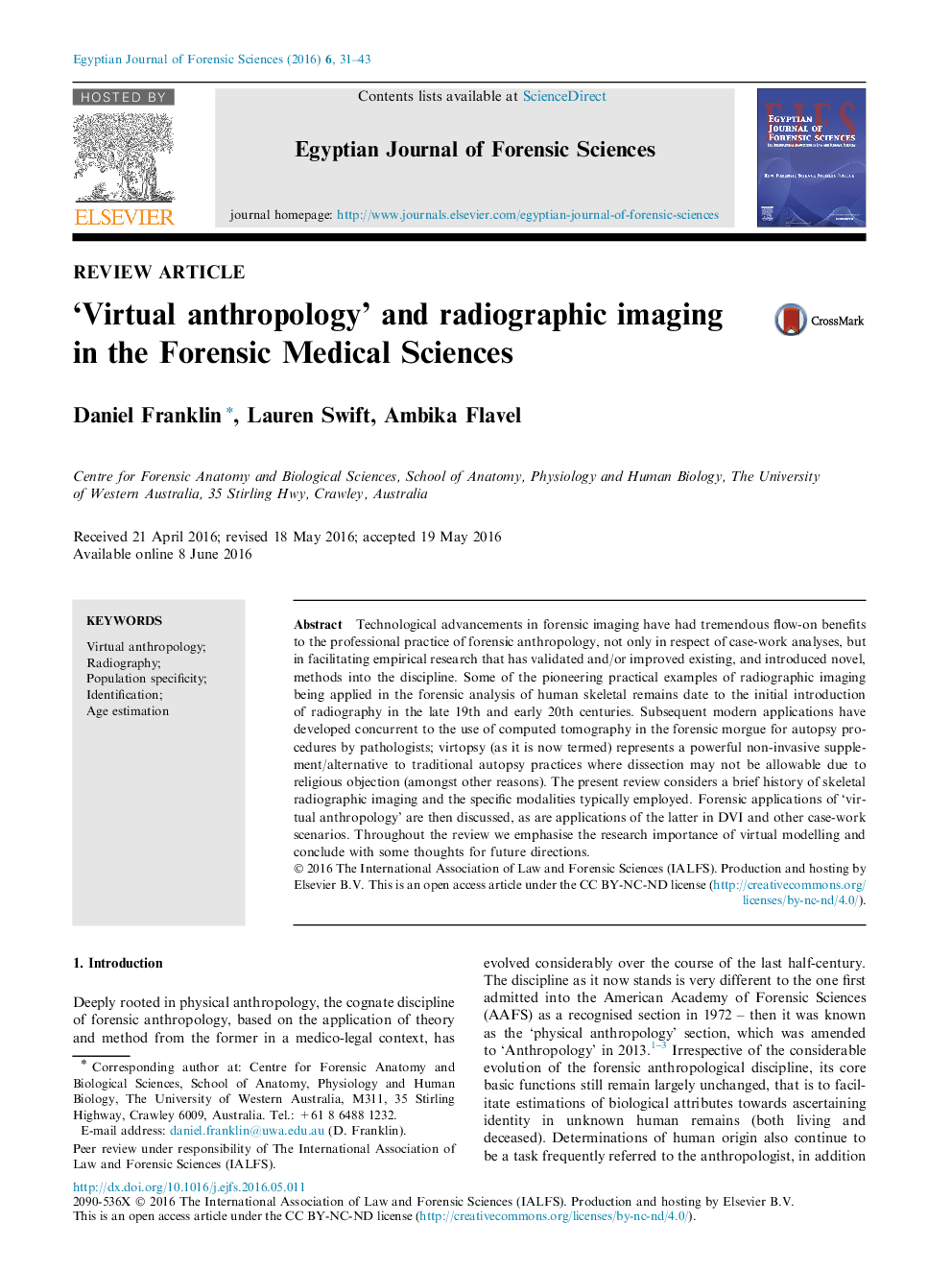| Article ID | Journal | Published Year | Pages | File Type |
|---|---|---|---|---|
| 1097417 | Egyptian Journal of Forensic Sciences | 2016 | 13 Pages |
Technological advancements in forensic imaging have had tremendous flow-on benefits to the professional practice of forensic anthropology, not only in respect of case-work analyses, but in facilitating empirical research that has validated and/or improved existing, and introduced novel, methods into the discipline. Some of the pioneering practical examples of radiographic imaging being applied in the forensic analysis of human skeletal remains date to the initial introduction of radiography in the late 19th and early 20th centuries. Subsequent modern applications have developed concurrent to the use of computed tomography in the forensic morgue for autopsy procedures by pathologists; virtopsy (as it is now termed) represents a powerful non-invasive supplement/alternative to traditional autopsy practices where dissection may not be allowable due to religious objection (amongst other reasons). The present review considers a brief history of skeletal radiographic imaging and the specific modalities typically employed. Forensic applications of ‘virtual anthropology’ are then discussed, as are applications of the latter in DVI and other case-work scenarios. Throughout the review we emphasise the research importance of virtual modelling and conclude with some thoughts for future directions.
